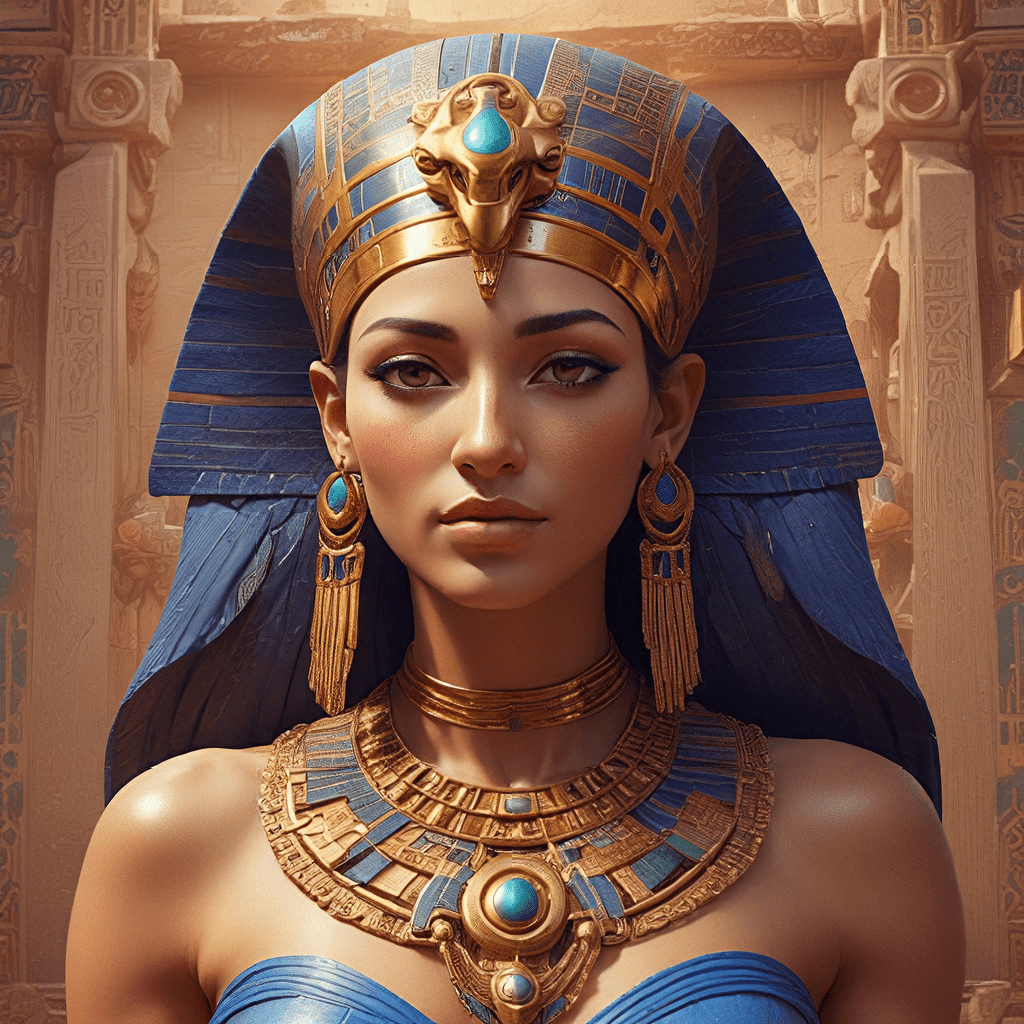## Hathor: The Goddess of the Afterlife
1. Introduction: A Multifaceted Deity
Hathor, a beloved and powerful goddess in ancient Egyptian mythology, was known for her multifaceted nature. She embodied a wide array of qualities, from love and beauty to motherhood and the afterlife. Her influence was deeply ingrained in Egyptian culture, appearing in art, literature, and religious practices. This article explores Hathor’s journey from a goddess of joy and fertility to a guide and protector in the realm of the dead.
2. Hathor’s Primary Roles: From Love and Beauty to the Underworld
Hathor’s roles were diverse and interconnected. She was worshipped as the goddess of love, beauty, music, dance, joy, and motherhood. She was also associated with fertility, protection, and healing. But beyond these earthly attributes, Hathor held a significant presence in the afterlife, acting as a welcoming figure for the dead and a guide through the treacherous underworld.
3. Hathor as the Goddess of Love and Beauty
3.1 Sexuality and Motherhood
Hathor’s association with love and beauty was deeply rooted in her role as a life-giving force. She was seen as the embodiment of female sexuality, representing the power of creation and nurturing. In Egyptian mythology, Hathor was often depicted as a cow, a symbol of motherhood and abundance. This connection further strengthened her role as a protector of women and children.
3.2 Music, Dance, and Joy
Hathor was also the goddess of music, dance, and joy. She was believed to bring laughter and happiness to those who worshipped her. Her association with these arts reflected her role as a bringer of harmony and balance. In ancient Egypt, music and dance played a significant role in religious rituals, and Hathor’s presence was often invoked during celebrations and festivals.
3.3 Protection and Fertility
Beyond her roles as a goddess of love and beauty, Hathor was also a protector and a symbol of fertility. She was believed to safeguard travelers, protect women during childbirth, and ensure the success of harvests. Her association with protection and fertility extended to all aspects of life, making her a beloved and revered figure in ancient Egyptian society.
4. Hathor’s Transition to the Afterlife: The ‘Lady of the West’
While Hathor was primarily known for her earthly attributes, her role in the afterlife was equally important. She was believed to have transitioned from a goddess of life and joy to a guide and protector in the realm of the dead. This transformation was reflected in her title, “Lady of the West,” which referred to the direction of the setting sun, a symbol of death and the afterlife.
5. The Role of Hathor in the Afterlife
5.1 Welcoming the Dead
Hathor’s presence in the afterlife was significant. She was seen as a welcoming figure for the deceased, offering comfort and guidance as they navigated the journey to the underworld. Hathor was believed to greet souls upon their arrival in the afterlife, offering them sustenance and protection.
5.2 Guiding Souls in the Underworld
After welcoming the dead, Hathor’s role evolved to guiding souls through the perilous underworld. She was believed to accompany them on their journey, offering solace and advice as they faced various trials and tribulations. Hathor’s presence helped to ease the transition from the earthly realm to the afterlife.
5.3 Protection from the Dangers of the Netherworld
The underworld was a realm of darkness and danger, filled with mythical creatures and challenges. Hathor was believed to offer protection to the deceased, shielding them from these dangers and ensuring their safe passage through the afterlife. Her presence provided a sense of security and hope to those who had entered the realm of the dead.
6. Hathor’s Association with the Sun and the Sky
Hathor’s connection with the sun and the sky further deepened her association with the afterlife. She was believed to be the embodiment of the sky goddess Nut, who gave birth to the sun god Ra each morning. This connection signified her role as a divine force that bridged the realms of life and death, birth and rebirth.
7. Hathor’s Connection with Isis: A Powerful Divine Duo
Hathor shared a close relationship with Isis, another powerful goddess in Egyptian mythology. Together, they represented the divine feminine, embodying love, motherhood, protection, and the mysteries of life and death. Their combined powers were revered across ancient Egypt, making them a formidable duo in the pantheon of gods.
8. Hathor’s Symbolism: The Cow, the Eye, and the Sistrum
Hathor’s symbolism is rich and varied. She is often depicted as a cow, representing motherhood, fertility, and abundance. Her eye, known as the “Eye of Ra,” symbolizes the sun’s power and her protective nature. The sistrum, a musical instrument, is also associated with Hathor, representing her connection with music, dance, and joy.
9. Hathor in Ancient Egyptian Art and Literature
Hathor’s presence is evident in ancient Egyptian art and literature. She was depicted in numerous temples, tombs, and sculptures, representing her importance in religious beliefs and daily life. Her stories and myths were passed down through generations, showcasing her divine powers and influence.
10. Hathor’s Legacy: A Lasting Influence on Egyptian Culture and Belief
Hathor’s legacy continues to resonate in modern times. Her influence on ancient Egyptian culture and belief system is undeniable. She remains a symbol of love, beauty, motherhood, and the mysteries of life and death. Hathor’s story is a testament to the power of female deities in ancient Egyptian mythology and a reminder of the enduring influence of ancient beliefs on our understanding of the world.




